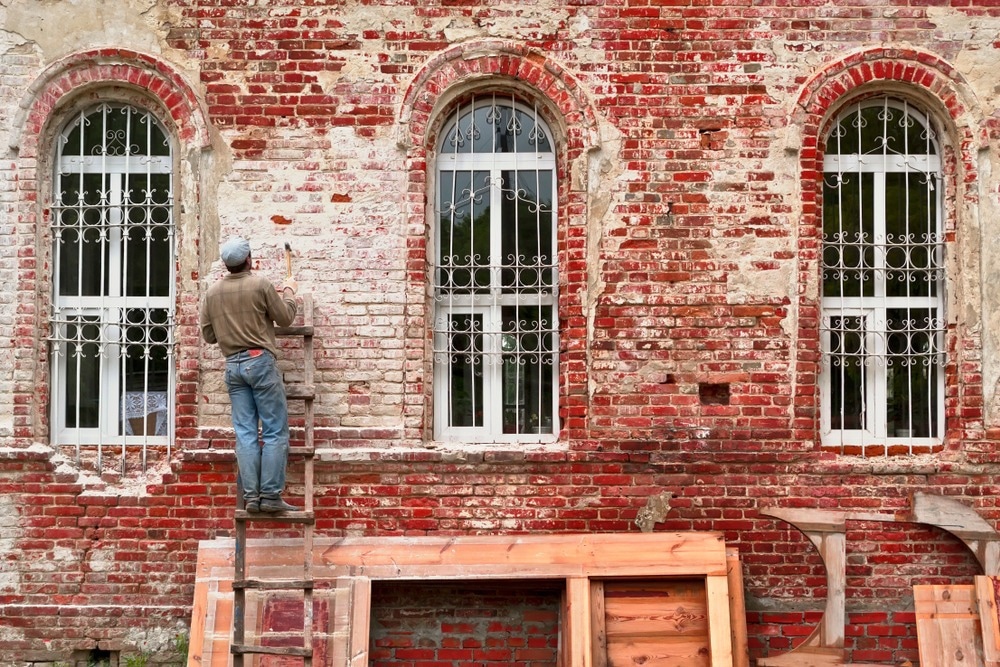The history of civilization is one of constant change, especially when it comes to the built landscape. Over the millennia, many buildings have come and gone, replaced by more fit-for-purpose structures. But, in the process, many historically significant buildings have been lost or altered beyond repair.
Conserving historically significant buildings, whether they are grand Medieval castles, cathedrals, civic halls, or fine examples of domestic dwellings in cities and towns across the world, is a complex task for architects and engineers. This article will provide an overview of this subject.

Image Credit: Peter Milto/Shutterstock.com
Preserving the Built Environment’s Cultural History
Humans have erected structures for shelter, defense, commerce, and civil and religious purposes since the late Stone Age. Temporary shelters were built by hunter-gatherers, with house construction starting about 1.8 million years ago, according to archaeological evidence.
As humans’ understanding of building techniques evolved, so did the scale and complexity of buildings constructed and their purposes. Cities started to appear in the Neolithic period, and with their rise came the exchange of ideas on a mass scale as humans moved from hunter-gatherers to urban dwellers.
Today, only traces of these earliest structures and metropolises exist. In the intervening millennia, the population has exploded, with many structures from multiple periods of history now dotting the landscape. Restoring and preserving these buildings is a major concern for conservators and architects.
The ravages of time significantly affect the structural integrity of older buildings, with weather, neglect, wear and tear, and multiple environmental and climactic conditions constantly causing damage to them.
In many countries, there are specific codes and regulations that govern which buildings are considered of historical significance and the materials and techniques that can be used to restore them. This is to ensure that conservation is sympathetic and preserves history and culture for the enjoyment of future generations.
Choosing the Right Materials for the Job
Restoring and conserving the fabric of historic buildings is not just about using any material. For instance, many conservation efforts over the past century have utilized concrete, which, whilst structurally sound, is not sympathetic to the building itself and may cause further damage to it.
Both the physical properties and appearance must be considered by restorers. Some materials (such as the aforementioned concrete) may actually hasten further deterioration. Additionally, durability and future maintenance needs should be considered during restoration. This requires a considerable level of expertise.
In addition to achieving proper sympathetic restoration of the building fabric, selecting authentic traditional materials supports vital crafts and traditional industries such as stonemasons and carpenters. However, in some cases, alternative materials are more appropriate.
This is especially true if more of the original building fabric can be conserved by choosing alternatives over traditional materials. However, again, the material must be tested and approved for use on historic buildings. Whilst cheaper materials may seem more attractive, they may last as well.
Materials such as stone slate roofing, traditional mortars (either lime-based or alternatives such as earthen mortars), timber, metals such as lead, and various paints such as lead-based variants are commonly used in conservation efforts. Nanolime is another material used to consolidate weathered limestone.
Matching Materials to the Original
Materials used in restoration efforts must be compatible with those used during construction. One example is stone. When replacing weathered or damaged stone, the new material must replicate as accurately as possible the physical, mineralogical, and chemical properties of the original stone.
However, this is challenging as the range of quarried stones has decreased in recent years, making it hard to find original stone materials. For this reason, alternatives can be used, but conservators must ensure that their appearance and properties are compatible to ensure properly sympathetic restoration.
Several steps are involved in sourcing new stone. These include establishing the significance of the building, understanding deterioration, using visual or in situ examination to establish the type of stone used, and obtaining samples of the original material for analysis.
Restoration Criteria
According to Historic England, there are a few criteria that govern the need and acceptability of any restoration. These include:
- Weighing up any changes made to the building’s heritage value
- Any evidence for the necessity of restoration work
- Whether the building’s current form is the result of a historically significant event or not
- How the proposed work respects the building or place’s previous forms
- How sustainable any proposed restoration and maintenance is.
In Summary
Restoring and conserving buildings of historic significance is crucial to protect them for future generations. This effort requires in-depth research, proper documentation, and the involvement of experts in the field of architecture, archaeology, and historic building restoration.
Restoration of heritage buildings must be true to the time period in which they were constructed. For this reason, techniques and materials must be sympathetic to the building’s fabric and its historical context. Materials must match originals, be sustainable, and must not contribute to further deterioration.
In essence, buildings are a living historical document of the time period they were constructed in. Losing these structures to the ravages of time or urban development means that the techniques used during construction and the cultural memory of the time period is lost forever. For this reason alone, conservation is absolutely essential.
More from AZoBuild: New Advancements in Sustainable Cement Production
References and Further Reading
Historic England (2021) Maintenance and Repair of Older Buildings [online] historicengland.org.uk. Available at:
https://historicengland.org.uk/advice/technical-advice/buildings/maintenance-and-repair-of-older-buildings/
Historic England (2023) Identifying and Sourcing Stone for Repair [online] historicengland.co.uk. Available at:
https://historicengland.org.uk/advice/technical-advice/buildings/building-materials-for-historic-buildings/identifying-and-sourcing-stone-for-repair/
StudioTECHNE Architects (2021) How to Restore Historic & Old Heritage Buildings [online] technearcitects.com. Available at:
https://www.technearchitects.com/blogs/how-to-restore-historic-and-old-heritage-buildings
Disclaimer: The views expressed here are those of the author expressed in their private capacity and do not necessarily represent the views of AZoM.com Limited T/A AZoNetwork the owner and operator of this website. This disclaimer forms part of the Terms and conditions of use of this website.